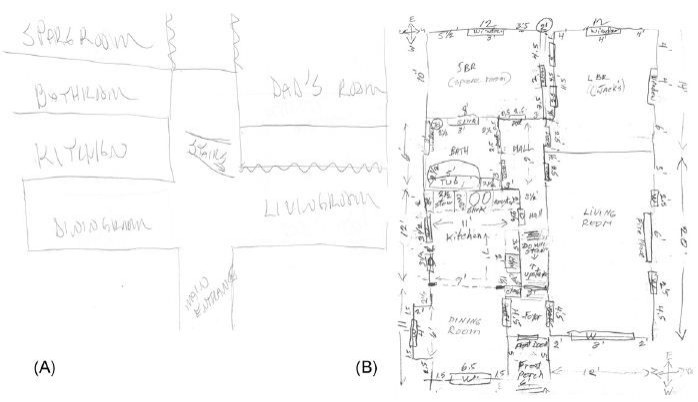Getting Lost: What Happens When the Brain’s ‘GPS’ Mapping Malfunctions

Most people know what it's like to feel disoriented in a new environment, unmoored from familiar surroundings and temporarily unable to find their way back home. Sharon Roseman has that feeling of getting lost all the time.
The subject of a documentary video by Michelle Coomber presented in the New York Times, the Denver resident has a rare neurological condition called Developmental Topographical Disorientation (DTD), or developmental topographagnosia, which has left her unable to form mental representations of surrounding spaces since she was a child.
While the rest of us learn to orient ourselves in familiar spaces by noting particular landmarks or navigational cues, sort of like mental "GPS" mapping, Roseman gets lost every time she leaves home and at times even within her own house.
"It's almost as if somebody picks up the entire world, turns it, and sets it back down," she said in the documentary. "It's everything-it's the universe has turned."
For most of her life Roseman kept her orientation problem a secret, struggling through school because she fixated on trying to remember physical cues of the building instead of paying attention in class. She even kept it from her husband, and struggled to reach her children in different rooms when they cried at night.
Years later, she happened to watch a television special about people with navigation problems.
Recognizing herself, she contacted Dr. Giuseppe Iaria of the University of Calgary in Canada, a leading researcher in spatial navigation who developed the diagnosis of Developmental Topographical Disorientation.
Iaria, who had published numerous papers on brain mechanisms of spatial orientation and navigation, told Roseman that she was not alone.
What is Developmental Topographical Disorientation?
Since publishing a case study of a 43-year-old woman with symptoms of DTD, Iaria found many other people with similar symptoms. Based on cognitive and orientation testing of 120 new cases, his research team determined key characteristics of the condition that are detailed in a 2010 paper.
Though damage to certain brain regions can hamper a person's ability to spatially orient, DTD does not necessarily involve any brain injuries. Patients with the condition also typically do not have any other abnormal cognitive problems.
"Like you and me, they don't have any memory complaints, they just can't orient," Iaria told Coomber. "They just get lost every day in the most familiar surroundings."
This isn't merely a poor sense of direction. Patients with the condition have a specific inability to form a cognitive map, a deficit, defined in the 2010 paper as "a spatial representation of the individual's surrounding that contains information about the environment's layout, the objects (i.e. landmarks) available within it and, most importantly, the spatial relationships between these objects."
Unlike individuals who develop topographagnosia, or difficulty recognizing landmarks, after suffering a stroke, people with DTD can often remember dramatic examples of navigation difficulties going back to early childhood.
Roseman, for example, vividly recalls removing a blindfold as a five-year-old playing hide-and-seek, only to find herself utterly disoriented even though she was in her own backyard.
It's possible that DTD involves different types of neurological difference, and people may experience their spatial disorientation in idiosyncratic ways.
Roseman can easily drive down straight streets, but turns and curves in the road bring out her anxiety about getting lost. Bodies of water, from swimming pools to oceans, are also disorienting to her.
While Iaria was able to help some patients learn new navigational skills that built on their existing abilities, there is no sure treatment yet.
His team is working on developing more generally applicable rehabilitation strategies, and is also using behavioral and neuroimaging methods to identify specific neural deficits related to DTD.
In recent years, neuroscientists studying rats have identified "grid cells" in the brain that help them navigate spatially- it seems likely that the "GPS" networks using these neurons work differently in people with orientation disabilities.
Iaria is also collaborating with another lab to research possible genetic markers of the condition.
While much is still not understood, the mere recognition of their condition is progress for people with DTD.
"I can now talk freely about D.T.D. and teach others what it is," Roseman told Coomber, "so that someday a young child can be diagnosed and not have to grow up being afraid."
Check out Iaria's website at gettinglost.ca for more information on Developmental Topographical Disorientation, where you can take an online test to assess your own orientation skills.
Published by Medicaldaily.com



























